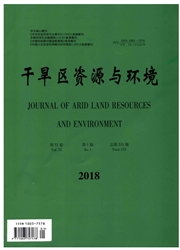

 中文摘要:
中文摘要:
利用东北地区90个气象站点1961-2010年逐日平均温度和最低温度数据,分析东北地区寒潮发生时空规律,包括寒潮、强寒潮、特强寒潮的空间分布、趋势分析、M-K检验和Morelet小波分析。结果表明:东北地区三种类型寒潮发生频次存在"高纬度和高海拔地区较大,低海拔和平原区较小"的特征;三种类型寒潮发生频次空间差异较大,从多到少依次是寒潮、强寒潮、特强寒潮;三种类型寒潮在上世纪70年代发生突变,在70年代后都呈现减弱的趋势,并在80年代中期达到0.05的显著水平;三种类型寒潮都呈现一个短周期特征,但特强寒潮中周期特征不明显;三种类型寒潮变化趋势空间差异明显,高海拔地区减弱趋势较大,但只有少数站点趋势明显。
 英文摘要:
英文摘要:
2010, the Based on the daily minimum and mean temperature of spatial and temporal characteristics of the frequencies af strong cold wave were analyzed, including the spatial distribution, let wavelet analysis. The results indicated that the frequencies of higher altitudes and latitudes, whereas they were smaller at lower 90 stations in Northeast China from 1~101 to cold wave, strong cold wave and exceptionally trend analysis, Mann - Kendall test and Mor- the three kinds of cold wave were stronger at altitudes and low plains; There were obvious variations in the frequencies of the three kinds of c0!d wave, with the cold wave being the strongest, while the exceptionally strong cold wave being the least; Three kinds of cold wave undergent mutation in the 1970s, and then had a negativ trend and were significant at the 0.05 confidence level in the mid - 1980s; All of them showed a short -period characteristic, whereas that of the exceptionally strong cold wave was not obvious; The spatial treads in the frequencies of the three categories of cold wave was various, with the strong negative trend at high altitudes, while a few sites were significant at the 0.05 confidence level.
 同期刊论文项目
同期刊论文项目
 同项目期刊论文
同项目期刊论文
 Interdecadal changes of vegetation transition zones and their responses to climate in Northeast Chin
Interdecadal changes of vegetation transition zones and their responses to climate in Northeast Chin Assessing the characteristics of extreme precipitation over northeast China using the multifractal d
Assessing the characteristics of extreme precipitation over northeast China using the multifractal d Comparative analysis of the extreme temperature event change over Northeast China and Hokkaido, Japa
Comparative analysis of the extreme temperature event change over Northeast China and Hokkaido, Japa 期刊信息
期刊信息
